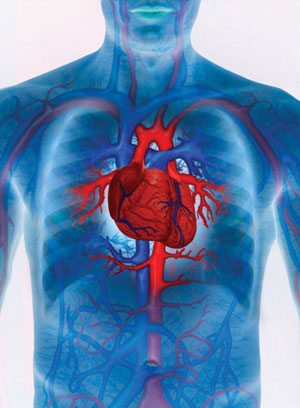
Like it or hate it, we all know one thing: Unless you want to be a disgusting lardball all your life, cardio is an essential component of your training program. If there’s something worse than doing a cardio routine you dread, it’s doing a cardio routine you dread that doesn’t give you any benefits. Wasted time, wasted sweat, all for nothing. Ugh.
The Cardio Factor
Whichever camp you fall in, the cardio lovers or the haters, you don’t want to complete a workout in vain. To help, we’ve delved into training research to provide four scientifically engineered routines designed to be quick, interesting and, most important, effective. What follows are four proven fat-melting workouts.
1) Continuous Vs Intermittent
The Study:
As we reported in The Edge in our September 2004 issue, researchers found that when healthy men did three 10-minute sessions of moderate-intensity running, they burned the same number of calories as when they ran at the same intensity continuously for 30 minutes.
The Expert Says:
“Whether you exercise continuously (for 30 minutes total) or intermittently for three 10-minute bouts, the caloric expenditure is almost identical,” says investigator Lloyd L. Laubach, PhD, associate professor of health and sport science at the University of Dayton (Ohio). “We have no reason to believe that the caloric expenditure for different modalities of intermittent vs. continuous exercise would be different.”
If cardio isn’t your favorite activity, then shorter exercise sessions may have you adhering to your cardio regimen longer, according to separate research out of the University of Pittsburgh.
The Workout:
Inspired by Laubach’s research, the following workout was designed by Cindy Whitmarsh, president of Ultrafit Nutrition Systems in San Diego. You’ll intersperse the cardio with weight training: For instance, start with the 10-minute treadmill workout, then do a 20-minute chest workout, come back for 10 minutes on the StepMill, complete a 20-minute triceps routine, then finish with the 10-minute jump-rope routine.
10-Minute Treadmill Workout
- 1 min. warm-up, walking or jogging at a medium speed
- 1 min. walk at a 10% grade and a medium pace
- 1 min. jog, flat, at a medium pace
- 1 min. all-out sprint on a flat grade
- 1 min. jog, flat, at a medium pace
- 1 min. of side shuffles (right leg):
Decrease the speed and side-shuffle leading with your right leg. Turn to the left and grasp the rail with your right hand for safety
- 1 min. of side shuffles (left leg):
Turn to the right, grasp the rail with your left hand and side-shuffle.
- 1 min. walk at a 15% grade at a medium pace
- 1 min. all-out sprint on a flat grade
- 30 sec. jog, flat, at a medium pace
- 30 sec. walk slowly to cool down
10-Minute Stepmill Workout
- 1 min. at a slow pace to warm up
- 1 min. at a medium pace
- 1 min. as fast as you can
- 90 sec. side-stepping up the steps, crossing your left leg over your right at a slow pace. Grasp the handrails for safety.
- 90 sec. side-stepping up the steps, crossing right leg over left at a slow pace. Grasp the handrails for safety.
- 90 sec. walking up the steps backward at a slow pace, digging with your heels
- 90 sec. walking up the steps forward as fast as you can
- 30 sec. walking up the steps at a medium pace
- 30 sec. at a slow pace to cool down
10-Minute Jump Rope Workout
- 1 min. slow warm-up, both feet
- 1 min. with both feet at a faster pace
- 2 min. jumping both feet together
Alternated with side-to-side singles a sequence of single jumps on each foot individually; the pattern is both feet, then left alone, then right alone, both feet, etc.
- 2 min. double jumps on each foot alone, alternating
- 1 min. jumping with both feet as fast as you can
- 1 min. jumping with both feet and crossing the rope in front
- 1 min. jumping high and quickly, knees toward chest
- 30 sec. jumping with both feet and crossing the rope in front
- 30 sec. jumping slowly (cool down)
2) Hit It Hard, Then Back Off
 The Study:
The Study:
Mixing up your exercise intensity can benefit you in different ways. Researchers from The College of New Jersey (Ewing) examined the effect of exercise intensity order on cardiores-piratory, metabolic and perceptual responses. Twelve subjects performed two 30-minute exercise sessions. One consisted of 15 minutes of high-intensity exercise followed by 15 minutes of low-intensity exercise; in the other session, the intensity was reversed, low to high. Oxygen uptake (V[O.sub.2]), heart rate (HR) and ratings of perceived exertion (RPE) were measured every five minutes. During the high-to-low exercise bout, V[O.sub.2] and HR were higher and RPE was lower. There was no difference between the two sessions for caloric expenditure and carbohydrate oxidation.
The most interesting finding was that during the lower-intensity portion of the high-to-low exercise bout, fat-burning was higher. Therefore, when doing your cardio, periods of high-intensity exercise before those of milder intensity can elicit greater fat-burning while seeming to feel easier.
The Workout:
Use this ladders approach to your next treadmill workout to put this research into practice. Ladders can be done on a treadmill or on a track. The idea is that you complete each quarter-mile faster than the last.
For The First 15 Minutes:
- First quarter-mile/lap: Walk/jog at a comfortable pace
- Second quarter-mile/lap: Jog a bit faster. If you’re on a treadmill, increase your speed by 0.2-0.3
- Third quarter-mile/lap and beyond: Increase your speed by 0.2-0.3 for each quarter-mile or lap until you’ve been doing ladders for 15 minutes
For The Rest Of The Workout:
Following that, return to a pace that’s comfortable but slightly challenging for 15 minutes or the remainder of your workout.
3) Try Testing Yourself
The Study:
 As reported in The Edge in our January 2005 issue, talking while exercising may help determine your appropriate exercise intensity level and help you avoid overexertion, according to a report in Medicine & Science in Sports & Exercise. Researchers at the University of Wisconsin at La Crosse studied the consistency of the “Talk Test” while 16 participants performed two progressively harder tests, one on a treadmill and one on a rower. All recited the Pledge of Allegiance during each exercise test. After completing the paragraph, participants were asked if they could speak comfortably during exercise. The ventilatory (or anaerobic) threshold was also measured. This is the point at which breathing begins to increase disproportionately to the increase in workload, and it’s a marker of the sustainability of exercise intensity.
As reported in The Edge in our January 2005 issue, talking while exercising may help determine your appropriate exercise intensity level and help you avoid overexertion, according to a report in Medicine & Science in Sports & Exercise. Researchers at the University of Wisconsin at La Crosse studied the consistency of the “Talk Test” while 16 participants performed two progressively harder tests, one on a treadmill and one on a rower. All recited the Pledge of Allegiance during each exercise test. After completing the paragraph, participants were asked if they could speak comfortably during exercise. The ventilatory (or anaerobic) threshold was also measured. This is the point at which breathing begins to increase disproportionately to the increase in workload, and it’s a marker of the sustainability of exercise intensity.
The results indicated the “Talk Test” exercise intensity was approximately equal to the ventilatory threshold during both modes of exercise.
The Expert Says:
“When talk becomes more halting or it’s difficult to talk normally, that correlates almost exactly with the ventilatory threshold,” says John Porcari, PhD, professor of exercise and sport science at Wisconsin, LaCrosse. “If people want to do aerobic conditioning, then they want to come just below [the point where speech becomes difficult]. If people want to do anaerobic conditioning, they need to force themselves beyond that for 30 seconds to a minute or two and then back for an interval workout.”
Porcari suggests experimenting for yourself to find your optimal cardio level. “For example, go for a walk,” he says. “Walk at different speeds. Notice when you can’t carry on a conversation anymore and then come just below that. For people who are exercising at a good pace, this can help them identify when they’re really going too hard.”
The Workout:
To determine your own cardiovascular thresholds, Porcari offers this workout.
Start by walking on a treadmill on a flat surface at a comfortable pace. Every minute, increase the incline by 1%. Within 10 minutes, you should reach your ventilatory threshold, at which you won’t be able to talk comfortably while exercising. Once you identify how that feels, you’ll be able to work just beneath that level in the future. Test yourself every 4-6 weeks as your fitness level increases.
4) Weight Your Efforts
The Study:
Research out of the Korea Sports Medical Nutrition Institute in Seoul found that the effects of light resistance (using dumbbells or resistance tubing) while doing cardio helped reduce bodyfat and bodyweight.
The Workout:
New York City personal trainer Ray Wallace, NSCACPT, designed the workout below based on the principle that doing cardio with light dumbbells can help produce more fat-free mass. Here’s his treadmill program that combines a bit of strength training (delts and biceps) with cardio:

Start with 3-5-pound dumbbells for the three exercises listed and maintain your speed between 3.0 and 3.5 mph as you first try this workout, depending on your workout experience.
“If you want to really challenge yourself, feel free to try this routine with a higher weight,” says Wallace. “But beware–it’s tough!” The workout can also be performed on an elliptical trainer.
References
- Asia Pacific Journal of Clinical Nutrition 13(3):242-247, 2004.
- European Journal of Applied Physiology, 90(5-6):569-574, 2004.
- Journal of Strength and Conditioning Research 18(2):373-376, 2004.
- Medicine & Science in Sports & Exercise 36(9):1,632-1,636, 2004.
Author: Carey Rossi
References:
http://www.muscleandfitness.com/
http://www.flexonline.com/
COPYRIGHT 2010 Weider Publications
COPYRIGHT 2010 Gale Group










